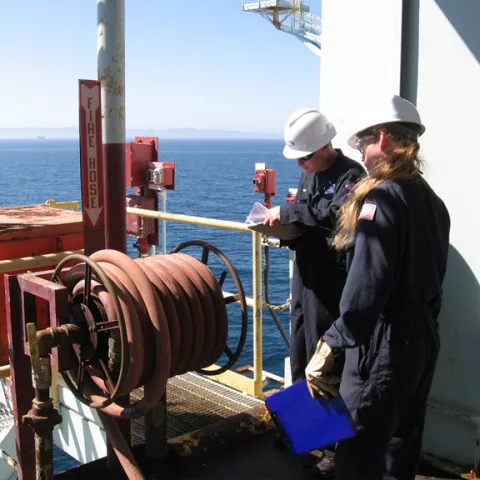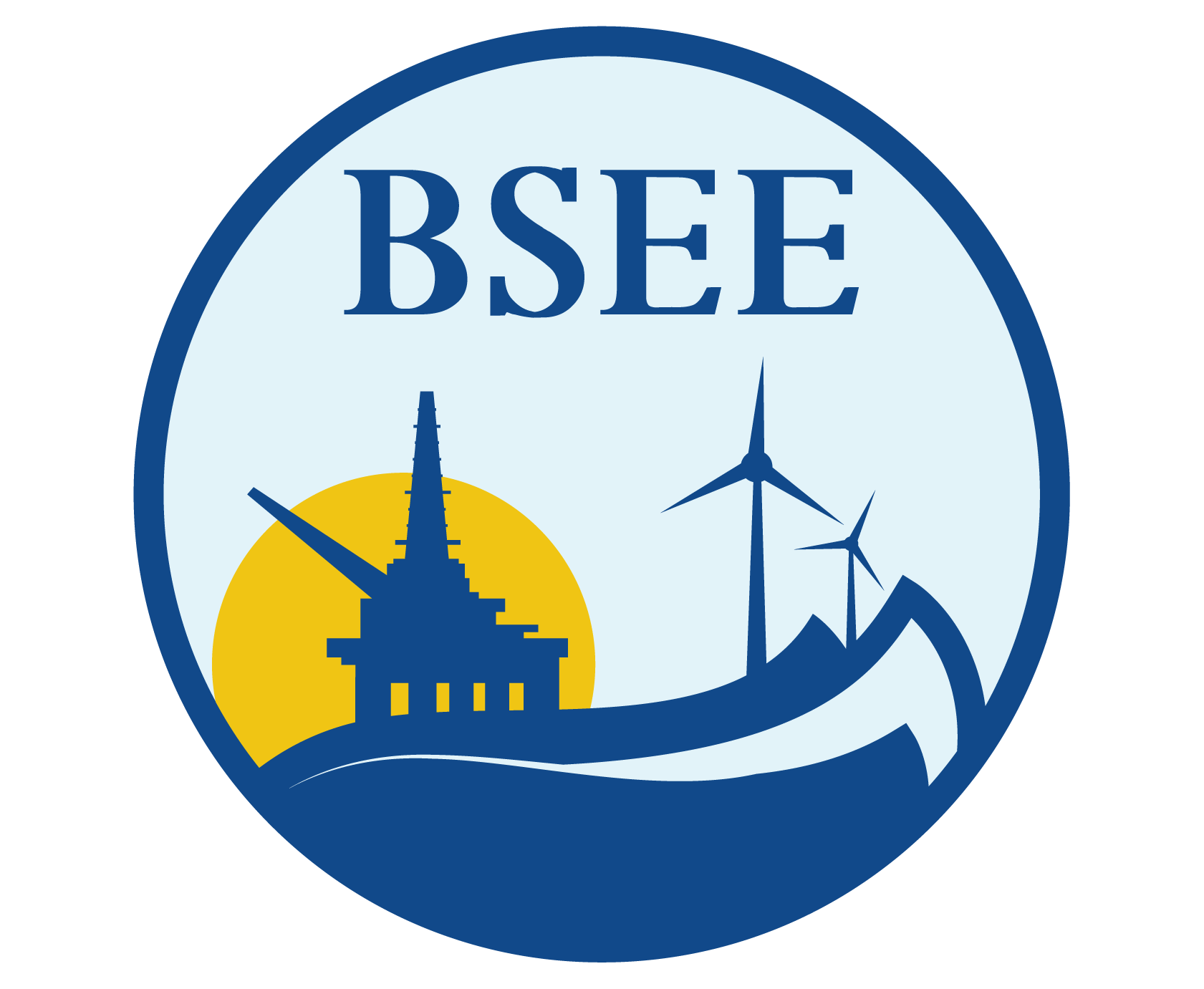Under the authority of the Outer Continental Shelf Lands Act (OCSLA), BSEE regulates the industrial activities associated with the drilling, completion, production, workover, and decommissioning of oil and gas wells on the Outer Continental Shelf (OCS), and the U.S. Coast Guard (USCG) regulates workplace health and safety and maritime safety items, such as navigational warning lights, on the OCS platforms.
In 1988 the USCG promulgated self-inspection regulations (33 CFR 140.103) to shift the burden for conducting the annual inspection of the USCG-regulated items on each OCS platform to the owners & operators, and requires them to document their inspections on the Fixed Platform Self-Inspection form (form CG-5432). The USCG then implemented an oversight program to verify the annual self-inspections were being completed and the OCS platforms were being maintained and operated in accordance with the applicable USCG regulations, Title 33, Subchapter N, Outer Continental Shelf Activities, Parts 140-147.
Effective June 7, 2002, BSEE (then MMS) was authorized to conduct inspections of the USCG regulated items on fixed OCS platforms, in addition to the items BSEE already inspects to ensure compliance with its own OCS regulations. Under the new rule, the USCG retains regulatory authority over its self-inspection program and will continue to be responsible for initial facility inspections to ensure full compliance with all safety requirements under USCG jurisdiction. However, once the initial inspection has been completed by the USCG inspectors, the annual oversight inspections of the USCG-regulated items are conducted by BSEE inspectors on the behalf of the USCG.
BSEE enforcement of regulatory requirements of the Fixed Platform Self-Inspection Program is accomplished in accordance with inspector guidance known as the Potential Incidents of Non-Compliance (PINCs). The 27 program-specific PINCs for the USCG inspection items, which were jointly developed by the USCG and BSEE, are denoted by the alpha-character “Z” (as in the Z-PINCS) and have enforcement actions ranging from “Warning” to “Component Shut-in” to “Shut-in Facility.'
To prepare BSEE staff for the assumption of new inspection responsibilities, the USCG developed training modules and conducted classroom training for both district inspectors and engineers in the Gulf of Mexico Region and the Pacific OCS Region. To further ensure consistency in inspection procedures, USCG also conducted on-site training for the Bureau inspectors. Following all requisite training, the Bureau began inspection functions on August 30, 2002 with the BSEE inspectors conducting either a full inspection of all 27 Z-PINCs or a limited (spot check) inspection of key safety items.
Efforts have been made to ensure consistency in program implementation and to establish procedures for the prompt identification and resolution of problems. The Bureau compiles biannual reports, based upon inspection statistics reported by the Bureau District offices, to highlight program progress and areas for improvement. These reports are presented to the USCG's Assistant Commandant for Operations by the BSEE Director during regular meetings between BSEE and the USCG, ensuring program attention at the highest level.

